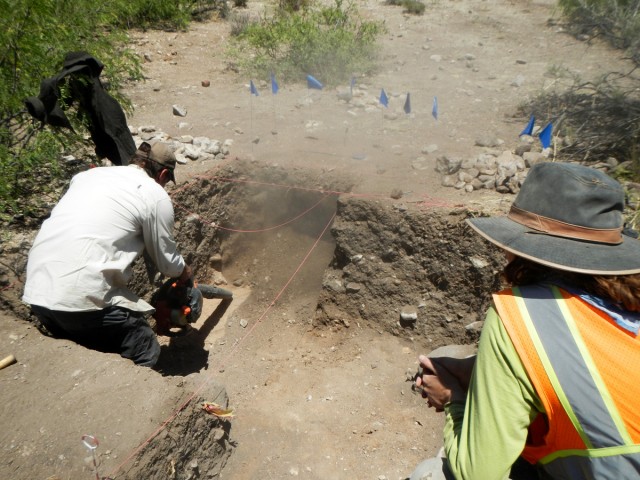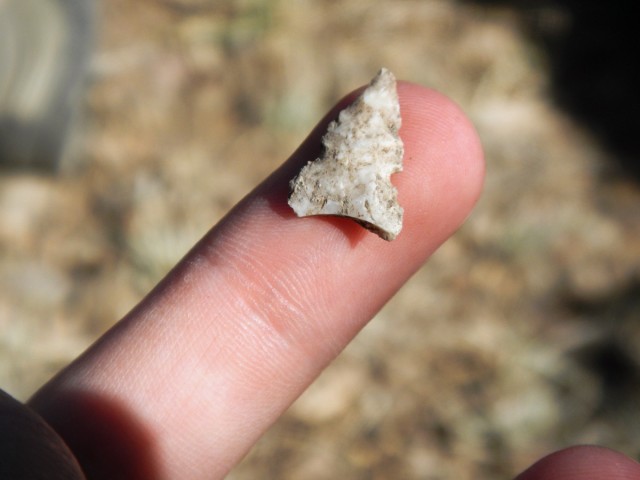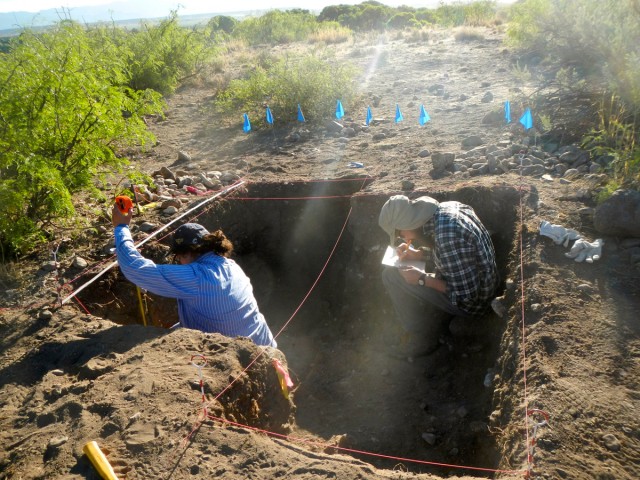- Home
- >
- Preservation Archaeology Blog
- >
- A Lesson Quickly Learned
Maxwell Forton, Preservation Archaeology Field School Student
A lesson quickly learned: not every excavation is going to unearth the find of the century. All too often, a unit is going to fail to meet your hopes and expectations. My group’s excavations atop the hill overlooking the Dinwiddie site failed to yield the preserved architecture that we had been hoping to find. Useful data were gleaned despite our disappointment, however.
Last year’s excavation unit atop the hill revealed what appeared to be the floor surface of a structure. Our goal for this field season was to follow up on this possibility of preserved architecture by opening up adjacent units. From these new units we hoped to gauge the nature of the architecture atop the hill and whether there were any clear signs of Kayenta influence. With these objectives in mind, we laid out our first unit and began digging.

At first, the signs that we were indeed excavating an architectural feature seemed positive. Our screens were revealing a fair number of pottery sherds, animal bones, projectile points, shell beads, cultural turquoise, and a terminated quartz crystal. Additionally, our first unit appeared to end at a compacted sand floor and a possible wall separating the artifact-rich fill and sterile sand. With these encouraging signs, we opened up an adjacent second unit.

As we dug the unit down, though, we began to realize that our unit did not hold the pristine architecture we sought. Despite a continuation of artifacts and a few pieces of plaster, our unit failed to produce further signs of architecture. A closer look proved that the floor we believed to be architectural was actually created by natural deposition, and the trash fill was the tumbled creation of a bulldozer. An untrained person probably investigated the site in the 1950s, removing any traces of remaining architecture atop the hill.
Although these findings are discouraging, it is important to remember that archaeologists are not in the business of treasure hunting. Just because we didn’t find the pristine artifacts or intact architecture we had hoped for, doesn’t mean that our excavations were a fruitless exercise.
For example, we now know that the hill site was more disturbed than we had believed. Rather than leaving this section of the site to assumption, our excavations determined the degree of disturbance and helped determine research design for future seasons. The artifacts we collected also speak to the nature of the site. We found a few pieces of adobe adhering to a boulder, suggesting that structures had stood upon the hill. Moreover, the ceramics we collected indicate a typical Salado village with no overt signs of Kayenta presence at its founding.

One thought on “A Lesson Quickly Learned”
Comments are closed.
Explore the News
-
Join Today
Keep up with the latest discoveries in southwestern archaeology. Join today, and receive Archaeology Southwest Magazine, among other member benefits.
Ah herein lies the lesson. We always start with a clear idea what we will have – and then we go on to expose something entirely different. It is because we are applying scientific methods to human behavior which is always a disconnect. People touring our sites used to ask me, “What do you hope to find?” and I would say, “The same thing I found last time.” but it never worked out that way which is why archaeologists must have facile, imaginative minds. If you are too rigid you will not be open to what the dirt is telling you.